BARIATRIC SURGERY
- /
- Bariatric Surgery
LAGB (Laparoscopic Adjustable Gastric Banding)
LAGB is one of the safest reliable and minimally invasive Bariatric Procedure. We have done many LAGB in which a gastric band is put around the top portion of the stomach through small incisions leaving a small space available for food. This results in feeling of full stomach after eating only small quantity of food. These results in weight loss of the patient in short duration. This Band can be adjustable time to time and even revised according to patient's need.
Characteristics of LAGB
- LAGB- material is Silicon which is highly Bio Compatible.
- Restrictive Procedure.
- Simple & Stable.
- Back to normal activity about 4-5 days.

Lap Sleeve Gastrectomy / Lap Banded Sleeve Gastrectomy
In this procedure about 85% of the stomach is removed laparoscopic ally. In this procedure the stomach is reshape into the form of tube or sleeve. The function of stomach is preserved by not alterative the outlet valve and valve of the stomach.
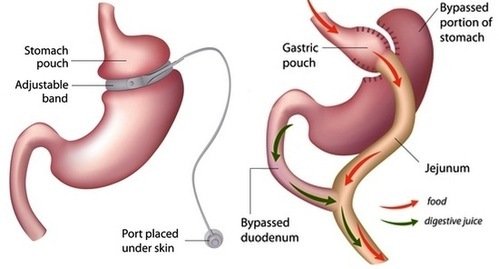
We have performed hundreds of Lap Sleeve Gastrectomy with Excellent results. The excessive stomach is removed and about 15-20% of original stomach is removed inside in tube shape. This is a restrictive procedure without altering the absorption of Minerals & Vitamins. It reduces the chance of developing ulcer.
Types of Procedures
- Restrictive Procedure
- Popular alternative to LAGB & Gastric Bypass
- Less invasive as compare to gastric Bypass.
- Restrictive Procedure
- Popular alternative to LAGB & Gastric Bypass
- Less invasive as compare to gastric Bypass.
- In this procedure Ghrelin Hormone (appetite Hormone) is removed.
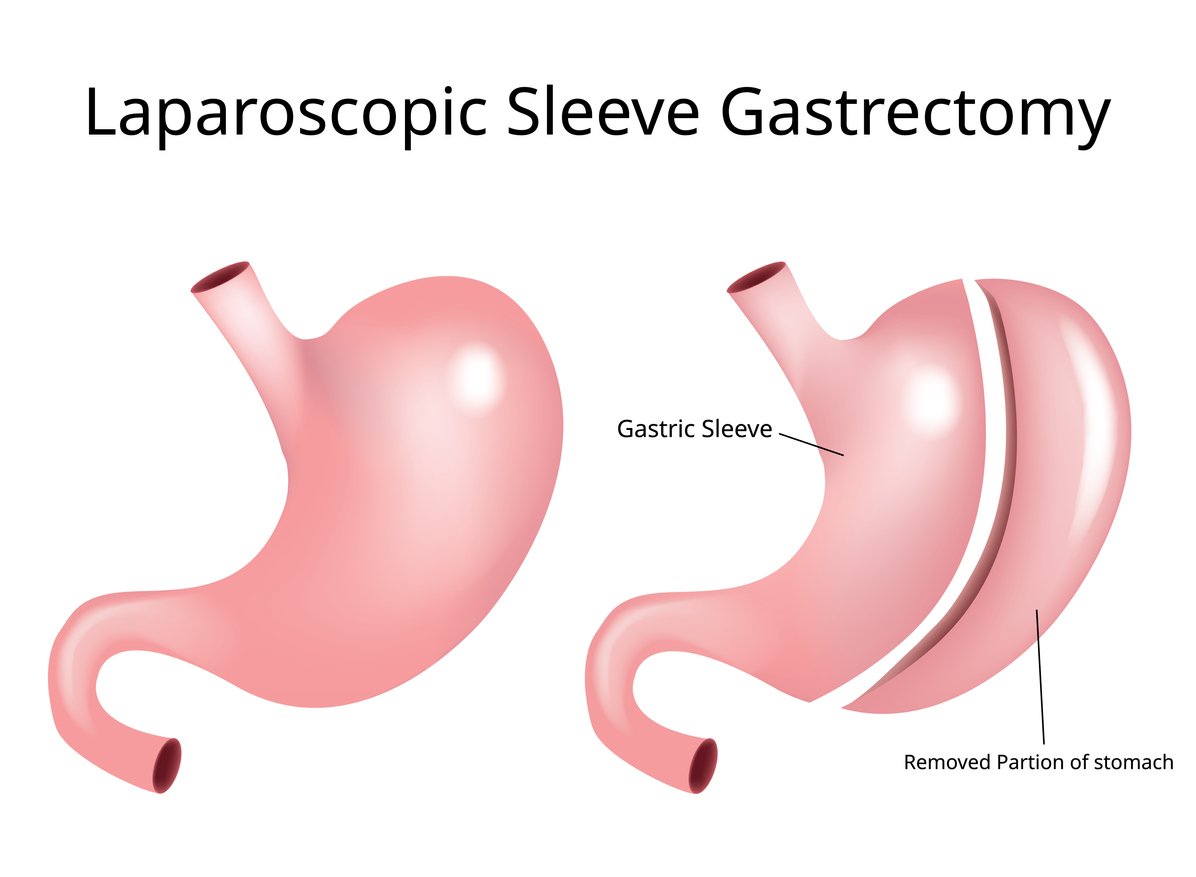
- Restrictive Procedure
- Popular alternative to LAGB & Gastric Bypass
- Less invasive as compare to gastric Bypass.
- In this procedure Ghrelin Hormone (appetite Hormone) is removed.
LAP Gastric Bypass / Lap Banded Gastric Bypass
Gastric Bypass is most Common Bariatric Procedure. This is also called as “Roux- en-Y-Gastric Bypass” (RYGB). This is believed to the Gold Slandered Procedure by American Society for Metabolic & Bariatric Surgery and National Institute of Health. We perform RYGB Routinely with Multidisciplinary team with excellent results. This is done laparoscopic ally by 5 small incisions.
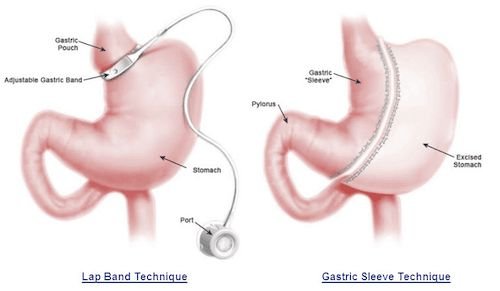
A small stomach pouch is created which restricts the food intake. Then a section of small intestine is cut and attached to small stomach pouch allowing the food to bypass the lower stomach. By restricting food intake and by decreasing the absorption of food by excluding most of the stomach, duodenum and upper intestine from contact with food & by re-routing food directly from pouch into the small intestine this procedure has excellent results in reducing weight loss in obese patient. In this procedure food is by passed through newly created channel and reduces the amount of calories and nutrients as the body absorbers.
- Stomach pouch: 50-60 ml.
- Restrictive & mal absorptive procedure.
- Length of small intestine by passed (150cm).
- Absorption of Vitamin B12 fe Calcium
- Wight loss is sustained.
- Hospital stay is 4days and Return to work in 5days.
Mini Gastric Bypass
The Mini Gastric Bypass (MGB) is a short, simple, successful, reversible laparoscopic gastric bypass weight loss surgery. It has been recently renamed as One Anastomosis Gastric Bypass. The operation usually takes shorter time, with lesser or similar hospital stay as regular bypass.
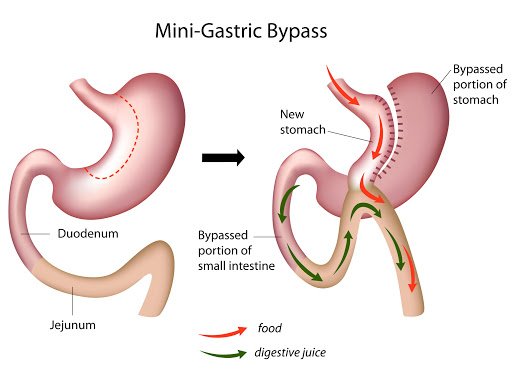
Revisional Laparoscopic Bariatric
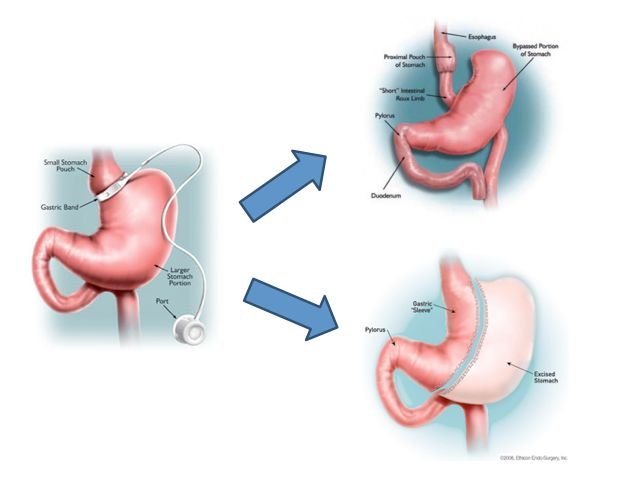
Procedures for Revision
- Gastric Band to Gastric sleeve or Gastric Bypass.
- Lap Sleeve Gastrectomy to lap Roux-en-Y.
- Gastric Bypass/ Duodenal Switch.
- Roux-en-Y GASTRIC Bypass to Laparoscopic Revision Gastric Bypass.
Bilio-Pancreatic Diversion
A biliopancreatic diversion is a weight loss surgery where the normal process of digestion is changed by making the stomach smaller. By this procedure, food bypasses part of the small intestine so that you absorb fewer calories. This surgery is for people who are more than severely obese. Super obesity means that BMI (body mass index) is 50 or higher.
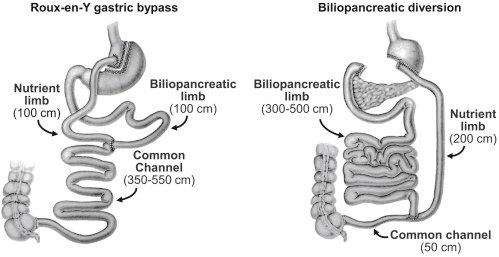
After surgery, the patient will feel full more quickly than when the stomach was its original size. This reduces the amount of food the patient will want to eat. Bypassing part of the intestine also means that fewer calories are absorbed. This leads to weight loss.
There are two biliopancreatic diversion surgeries: a biliopancreatic diversion and a biliopancreatic diversion with duodenal switch. Most surgeons will not perform duodenal switch surgery except in super obesity.


